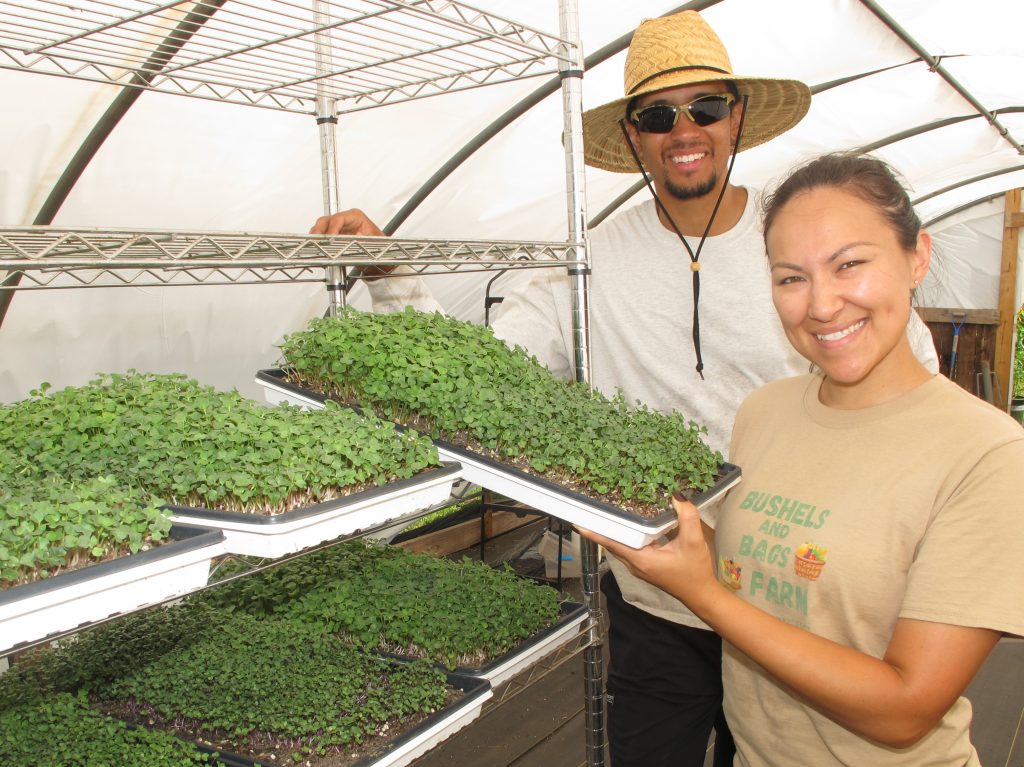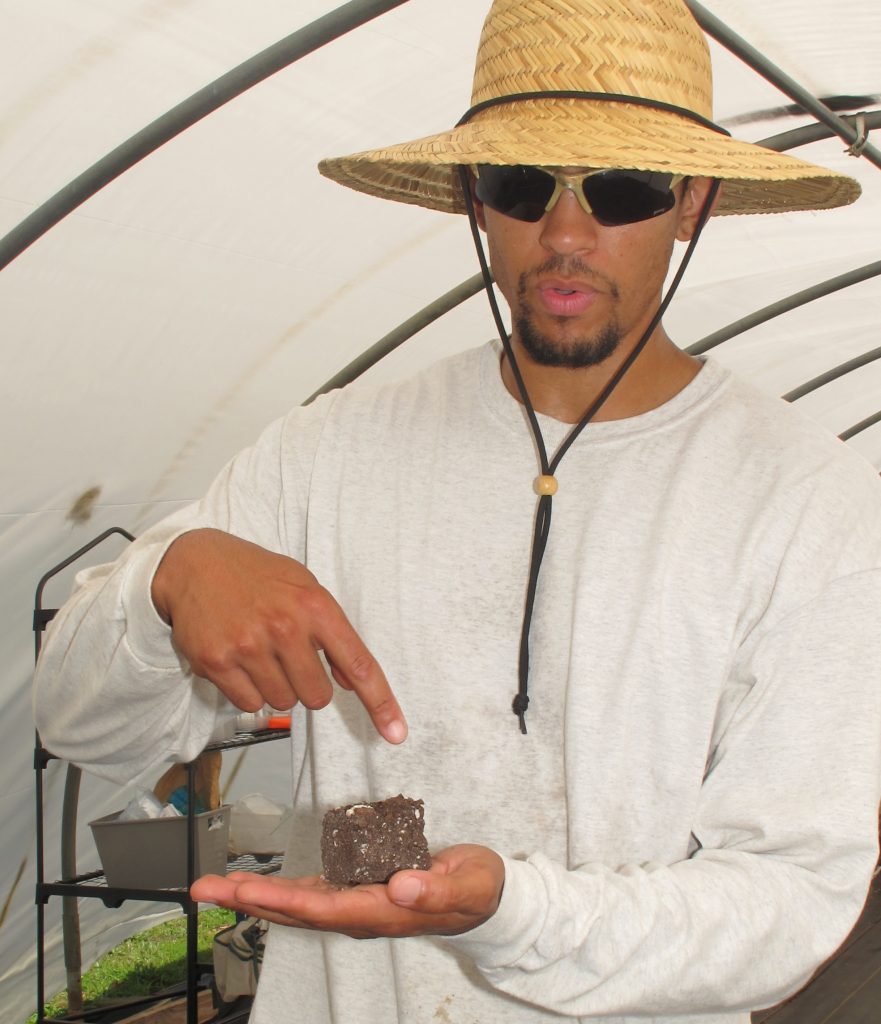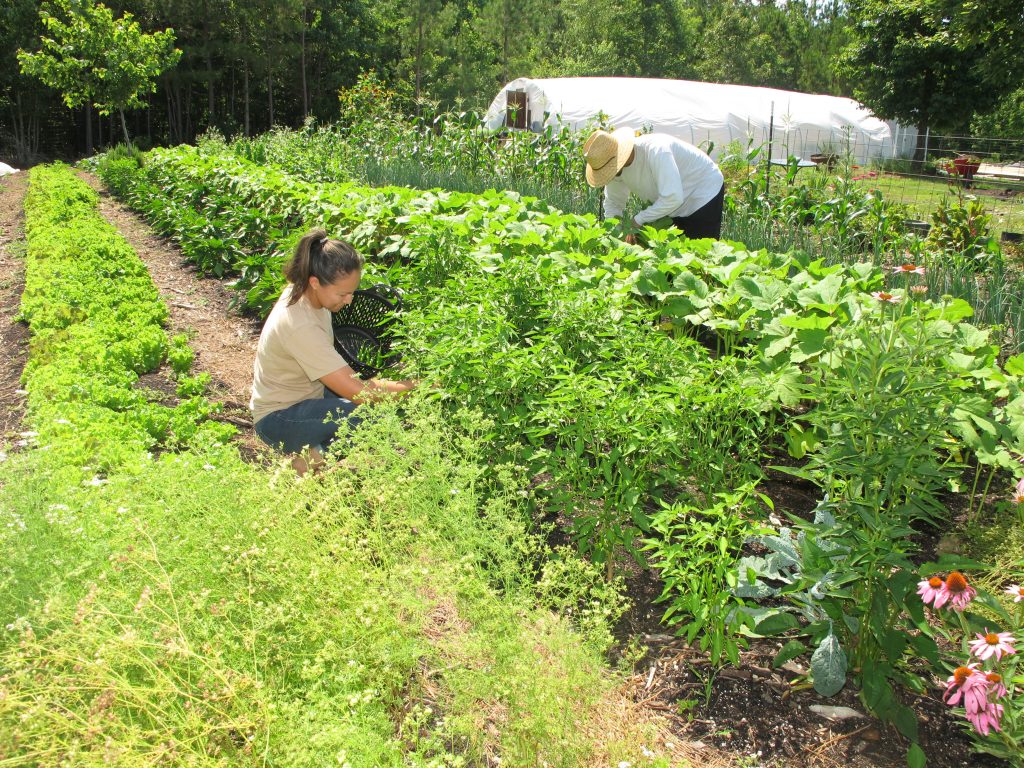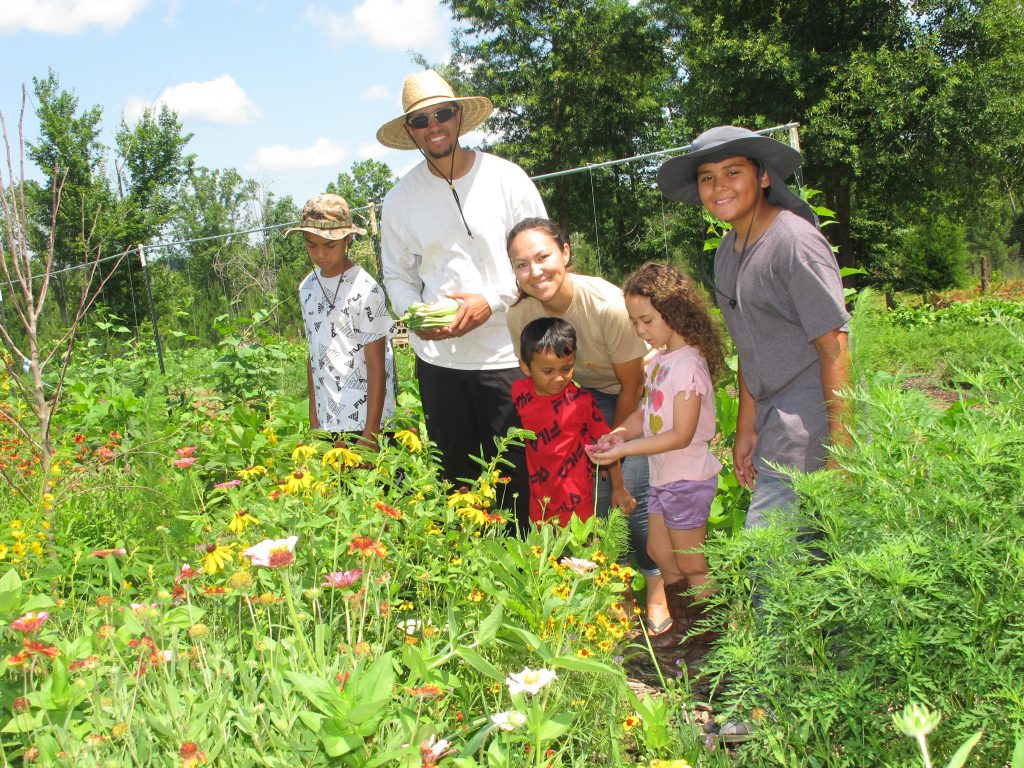
RIDGEWAY – For the Samuels family, the journey from the Columbia suburbs to small-scale farming in rural Fairfield County was a process: a study undertaken, a risk leapt into, and a dream realized.
Now in their second year earning their primary income from the crops they produce on their land just outside Ridgeway, they’re continuing to expand and grow what they produce – and embracing the joy they get from knowing that they are not only feeding their family, but also helping to feed the community well.
“Our goal is just to help the community eat better and be healthier,” says Kim Samuels.

For Kim, her husband Lance (the mastermind behind the farm) and their four young children, the key to it all was something a lot of people haven’t even heard of: microgreens.
What exactly are microgreens? They are small, young vegetable plants grown in such a way as to be snackable or usable in salads, packed with the same nutrients that would typically be contained in their mature form.
“Microgreens are really just the small version of the larger plants, just the seedling version…. It’s the same plant that you would harvest at a later stage; we just grow it to that seedling stage and harvest it earlier because it’s much more nutrient-dense,” Lance says.
Often used as garnishes, to top off meals, or in healthful smoothies, microgreens have taken off in the last decade or so as a “superfood” around the country.
And the numbers are eye-popping: A microgreen broccoli plant, for example – something tiny that you can eat in just a bite or two – contains 40 percent more vitamins than an entire head of broccoli.
It would be tough to eat enough broccoli to match its nutrients, he says, especially for someone who’s not already a veggie fan. If you’re looking for a lifehack to eat your vegetables without having to actually eat your vegetables, microgreens could be it.
“For kids especially – parents trying to get their kids to eat healthy – you can throw that onto their meal… and it doesn’t really change the taste of their meal much,” Lance says.

And while microgreens can be a bit touchy – factors like soil, humidity, light, and watering conditions have to be just right to get them to grow properly – once you’ve got the process figured out, several varieties can be produced.
“At the beginning… that’s how we introduced ourselves as Bushels and Bags Farm: with the microgreens,” Kim says.
While they found themselves having to educate some people about microgreens and their benefits, she says, they also found that a surprising number of people already knew about them – and were eager to buy them at a farmers’ market.
Among the health benefits of eating microgreens, Kim says, are that they can help with cardiovascular and kidney problems, help support healing for people receiving treatment for cancer (especially colon cancer), help regulate blood sugar, and help repair damaged cells. Among the favorites: broccoli, sunflower, red cabbage, and radish.
While Kim’s specialty is the growing of microgreens, the Samuels also sell a variety of regular produce, which now makes up a majority of the farm’s offerings.
For Lance, the whole philosophy and process behind how the farm operates – from the microgreens to the regular vegetables – is based on sustainable farming principles that combine the new with the ancient.

For example, they practice no-till farming, which is just what it sounds like: After initially breaking the ground once to remove rocks and other debris, they never till the soil again.
They use plastic to kill weeds the first year – and after that, he says, the weeds aren’t as much of an issue. They also crop year-round, thanks to South Carolina’s mild climate, and plant cover crops in between rotations, as well as putting down compost annually – all things that help with weed control.
They also plant compatible plants together in the same beds, an ancient practice that’s not compatible with modern farming equipment and large-scale production but is highly compatible with smaller, human-scale farming.
These methods are catching on, he says, because of concerns about the impact of soil erosion and the chemicals often used in agriculture.
The only piece of equipment they use in their crop beds, he says, is a walk-behind tractor – a machine that looks similar to a garden tiller but is not used to turn over the soil. The idea is that by avoiding the soil compaction caused by larger tractors, for example, the roots have more space to grow and the rainfall soaks more fully into the ground.
“Tilling destroys all the life in the soil: It disrupts the fungal life, it disrupts all the beneficial bacteria, it disrupts the worms, the arthropods,” Lance says. “These organisms – they do the work that we’re wasting time trying to do with heavy machinery anyways. The difference is they do it while benefiting the soil, while benefiting the plants.”
Like in Europe, he says, small-scale farming techniques here can result in a surprising level of production; right now, his family is cultivating food crops in roughly 50 planting beds on just about a quarter-acre of their 30-acre farm.

While this is only their second year selling crops, he says the business began to take root several years ago.
“Our journey into farming started when we both – me and my wife – became certified personal trainers,” he says, “and what we were learning as we went through the personal training program and then of course fitness in general is that… people can exercise all they want, but if they don’t have the right nutrition and they’re not eating good, it doesn’t matter.”
It began, he says, with a desire to grow healthy food for themselves and their kids. Lance says it took him half a dozen years of study, from taking classes on soil biology to reading up on European farming methods, to reach the point where he felt ready to launch the farm.
Once they began, it quickly evolved from gardening for the family to a profit-making enterprise, endeavoring to provide healthy food not just for themselves, but for the community as well.
Their children – Eli, 12; Josiah, 11; Naomi, 6; and Ezra, 4, all homeschooled, are regular helpers on the farm – and regular eaters of the microgreens. They also help out their parents on market days – Wednesdays in Blythewood and Saturdays in Winnsboro.
In addition to regular sales, the markets are also the pickup points for their CSA (community-supported agriculture) subscription boxes – essentially a weekly subscription for fresh local veggies that can be purchased for 8 to 12 weeks at a time.
Right now, Lance says, they’re working on another expansion: They’ve been contracted to provide produce for a bodega-style grocery store at a new mixed-use community in the Vista
And as they grow their produce business, it’s also become the lifestyle where they want to grow their family.
“All the kids help with harvesting,” Kim says. “And it works just fine because the whole family is together, and it’s nice.”
The Samuels produce can be found at the Fairfield Farmers and Artisans Market in Winnsboro (117 E. Washington Street, behind the clock) from 9 a.m. – 12 noon, and at the Blythewood Farmers Market in Doko Meadows Park on Wednesdays from 4 – 7 p.m. For more information, contact the Samuels at 803-338-6316 or go to BushelsandBagsFarm.com.











